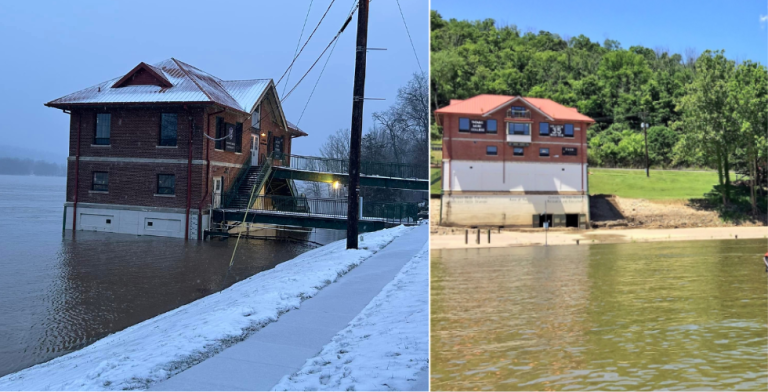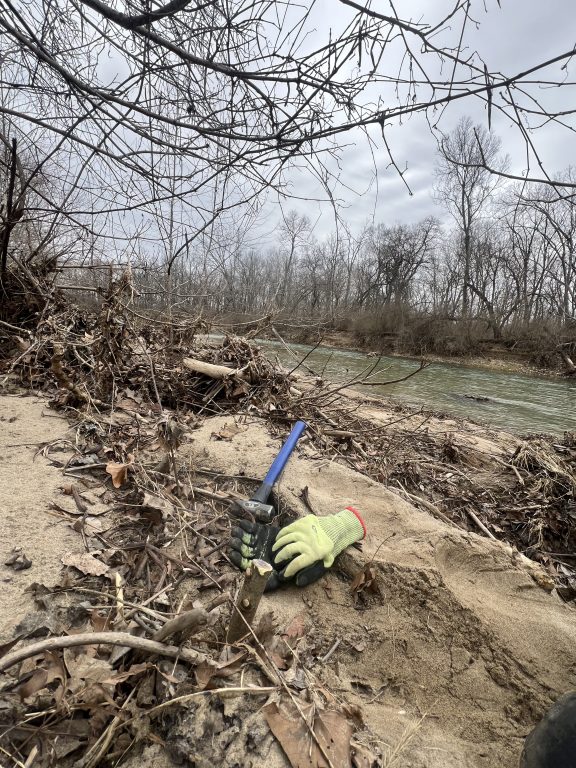Written by: Kathryn Stonesmyth
As the snow melts and spring rains fall, you may have noticed how wet our world is becoming. It happens every year, but nonetheless, it’s somewhat surprising how damp and rainy springtime in Ohio can be. Saturday, March 22nd is World Water Day. World Water Day was started by the United Nations in 1993. Each year a new topic relating to water conservation and ecosystem health is observed and advocated for. This year’s topic is glacier preservation! You can read more about the critical status and role of earth’s cryosphere (glaciers, ice and snow) in our water cycle and global ecosystems here.
While ice and snow have melted away from our yards by now, the evidence of all that precipitation is still heavily present in our region in many ways. In late February of this year, with snowmelt and heavy rainfall, the Ohio River surpassed flood levels, reaching 50+ feet in stretches of Southwestern Ohio and Northern, Eastern and Western Kentucky. The February 2025 Kentucky Flooding Summary Overview published by the National Weather Service stated that “at least a dozen river sites had preliminary crests within the top 5 of recorded crests.” Meaning that at least a dozen river sites across Kentucky had near record water levels over the weekend of February 15th/16th. Intense flooding from this February storm has affected much of Kentucky as well as parts of West Virginia and Tennessee.
Elevated water levels at collaborator site Thomas Moore University Biology Field Station in February 2025 as compared to average summer levels.
In Kentucky, the hardest hit by flooding, the impact of these flood events resulted in hundreds of road closures, the loss of power for more than 40,000 Kentucky residents and over 1,000 water rescues across Kentucky, including evacuations of a hospital, nursing home and apartment complex. On Tuesday February 18th, CNN reported that at least 12 people lost their lives in Kentucky over the weekend’s storm events.
Clean-up and restoration efforts are ongoing; please use and share the resources available in the Kentucky Flooding Resources Document and donate if you are able. Resources shared by Urban Appalachian Community Coalition.
With the warming of our climate, flooding events like this will become more common. As we consider ways to prevent and prepare for these flood events, we must take a look around to observe and learn from the impact of events like this.
Flooding is a natural phenomenon and an annual part of our spring season, but with increases in impervious surfaces– human infrastructure reducing water infiltration – in addition to climate change causing more sporadic and intense weather events, flooding is getting more intense and harder to manage. But there are things we can do to mitigate the impacts. Increasing public greenspaces is one huge way to reduce flooding by introducing more plants to our urban spaces. There are tons of ways to get involved in increasing local greenspaces, get involved with your local community council to find out how to help! Greenspaces allow for increased water retention, reducing flooding and recharging our groundwater reserves. Transitioning our public and private lawns into native prairie landscapes is another huge way to reduce local flooding and improve local water retention, which also helps your plants stay resilient in drought! Plus you get the added benefit of providing food and habitat to local pollinators, birds and other wildlife! Check out the City of Cincinnati’s 2023 article titled, “Transform your lawn into a native plant sanctuary,” for more information and ideas on how to get started!
Livestaking Project on Twin Creek
Ohio River Foundation is here to not only help you and your students learn more about our incredible aquatic habitats and the issues they face, we have boots on the ground working hard to improve these local gems! Early spring is a busy season for us at Ohio River Foundation. As education programming ramps up, so too does our environmental restoration work! This spring we are again working on improving riparian habitat on Twin Creek by planting roughly 10,000 live stakes along the creek. Planting live stakes will help ensure these stream banks continue to serve their critical role in flood mitigation, pollution filtration and erosion control, protecting this beautiful and important Ohio River Tributary. Read more about livestaking and our past work on Twin Creek here.


